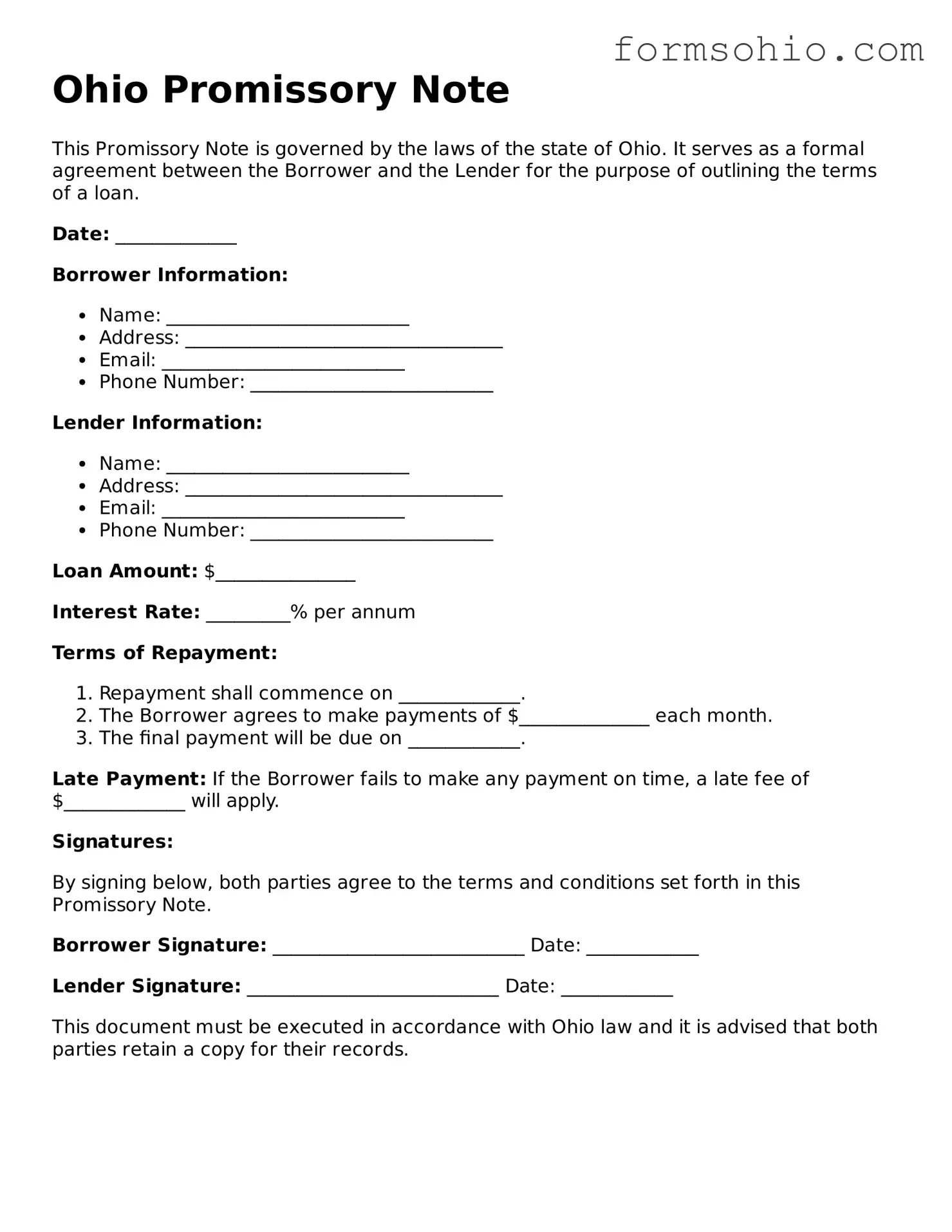Ohio Promissory Note
This Promissory Note is governed by the laws of the state of Ohio. It serves as a formal agreement between the Borrower and the Lender for the purpose of outlining the terms of a loan.
Date: _____________
Borrower Information:
- Name: __________________________
- Address: __________________________________
- Email: __________________________
- Phone Number: __________________________
Lender Information:
- Name: __________________________
- Address: __________________________________
- Email: __________________________
- Phone Number: __________________________
Loan Amount: $_______________
Interest Rate: _________% per annum
Terms of Repayment:
- Repayment shall commence on _____________.
- The Borrower agrees to make payments of $______________ each month.
- The final payment will be due on ____________.
Late Payment: If the Borrower fails to make any payment on time, a late fee of $_____________ will apply.
Signatures:
By signing below, both parties agree to the terms and conditions set forth in this Promissory Note.
Borrower Signature: ___________________________ Date: ____________
Lender Signature: ___________________________ Date: ____________
This document must be executed in accordance with Ohio law and it is advised that both parties retain a copy for their records.
